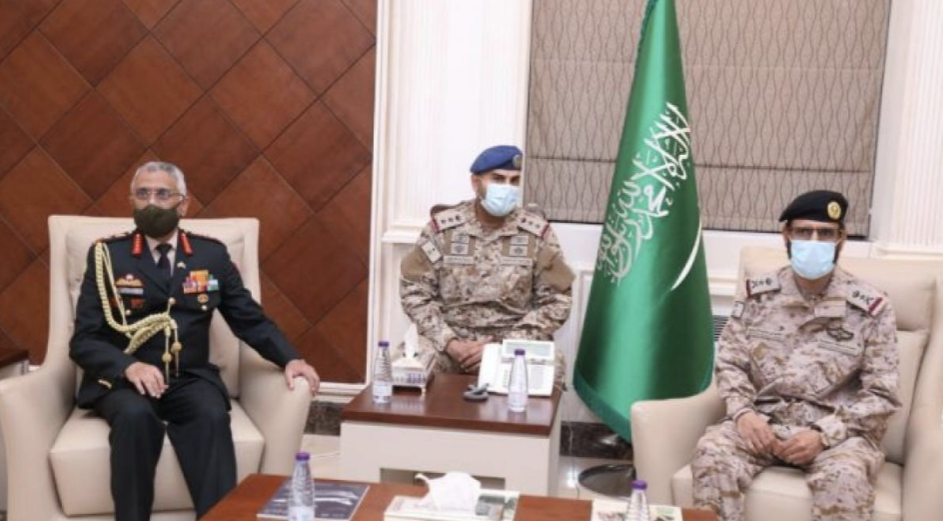Earlier this year, the Indian Navy conducted its military naval exercise, “Milan”, in Vishakhapatnam, where more than 40 navies from around the world participated. Convened since 1995, the exercise this year was conducted in two phases—the harbour phase (25-28 February) and the sea phase (1-4 March). The flagship drills have not only enabled the navy to develop military relationships but have provided India with a path to showcase its growing military power.
The Milan exercise’s expanding size of participants and complexity of drills is symbolic of India’s expanding defence diplomacy imprint from West to Southeast Asia. This diplomacy includes a more advanced naval engagement, greater military exercises, and enhanced efforts for defence exports. As a result, they have improved interoperability with partner militaries, built partnerships, and earned diplomatic heft for India.
One of the key drivers of India’s defence diplomacy has been China’s persistent aggression in the region, particularly in the South China Sea. In recent years, India has also intensified its military cooperation with countries around the South China Sea. They, too, are keen to expand their security ties with India to balance China and bolster their maritime security.
Most Southeast Asian states—Indonesia, Malaysia, Vietnam, Brunei, Singapore, Cambodia, Thailand, and Myanmar, participated in this year’s Milan exercise. Of these, Singapore, Thailand, and Indonesia participated in the inaugural edition of the exercise in 1995. The Indian Navy has supported this engagement by participating in multilateral exercises in the region like the Indonesian Navy’s Komodo and the US-led South East Asia Cooperation and Training exercises. India is utilising this collaborative approach to stimulate defence exports and counter China, which has leveraged its defence supplies to entrench itself in the region.
In a major boost to India’s defence industry and exports, the Philippines signed a $375 million deal with India to procure the “Brahmos” missiles. Under the contract, India will provide three missile batteries to the Philippine Navy and potentially a follow-up order. With a target of US $5 billion for defence exports by 2024, India has intensified its efforts to sell weapons to Southeast Asia and Africa, where Chinese defence companies dominate. Due to such efforts, the exports have soared to INR 10,745 crores in 2018-19, from just INR 1,940.64 in 2014-15.
For a long time, India has been leading in Humanitarian Assistance and Disaster Relief (HADR), as seen during the 2004 Indian Ocean tsunami, the 2015 Nepal earthquake, and the 2020 floods in Madagascar. The acquisition of equipment like the INS Jalashwa transport dock and C17 transport aircraft in the last decade has empowered the Indian military to execute such operations.
Extreme weather events in the region increase the propensity for natural disasters, particularly in the Bay of Bengal region. India is coordinating with partner countries to enhance its response mechanism. HADR remains an important focus area within the Quad, but India has also undertaken initiatives with BIMSTEC (Bay of Bengal Initiative for Multi-Sectoral Technical and Economic Cooperation) countries to envisage contingencies for such operations in the backdrop of the pandemic.
India has carefully created its foreign policy to deal with the West Asian monarchies. A critical factor which has crafted this relationship is India’s defence outreach in the attire of Military Diplomacy. India has advanced its security cooperation with the region by focusing on naval engagement while the region continues to witness dramatic shifts in the wake of the Abraham Accords and China’s growing presence in the region. India and Saudi Arabia have also had high-level military exchanges with respective army chiefs undertaking maiden visits—Indian Army Chief General MM Naravane in December 2020 and Chief of Saudi Arabia Land Forces, Commander Lt. Gen. Fahd Bin Abdullah Mohammed Al Mutair in February 2022.
Oman has been an important anchor for India’s military engagement in the region. Besides the regular military exchanges between the two militaries, Oman has granted the Indian Navy access to the Duqm Port for logistics and support. This has facilitated the navy’s sustained long-term presence in the western Indian Ocean, which for years has served as a hotspot for piracy. Though piracy incidents have declined lately, other challenges have emerged, like drug trafficking and illegal fishing, that demand maritime attention.
India has been working with its partners to contain the adverse security situation falling out of an unstable Afghanistan. The India-Central Asia Summit and the Regional Security Dialogue held a few months apart, highlighted India’s position vis-a-vis the situation in Afghanistan and underlined India’s concerns regarding cross-border terrorism and drug trafficking. To counter this, India is exploring the possibility of holding joint counter-terrorism operations with Central Asian countries that are willing to participate in the exercise, which will equip their respective security forces to combat potential terrorism spillovers.
India has also taken a sympathetic view of the 80 Afghan cadets who recently graduated from different Indian military training institutions. New Delhi has now offered these stranded cadets a year-long training course under the Indian Technical and Economic Cooperation Programme. These initiatives are helping India build a sustained cooperative engagement and create a web of partnerships throughout the region. Sustaining these partnerships will require India to invest more in its naval, expeditionary, and logistic capabilities.
